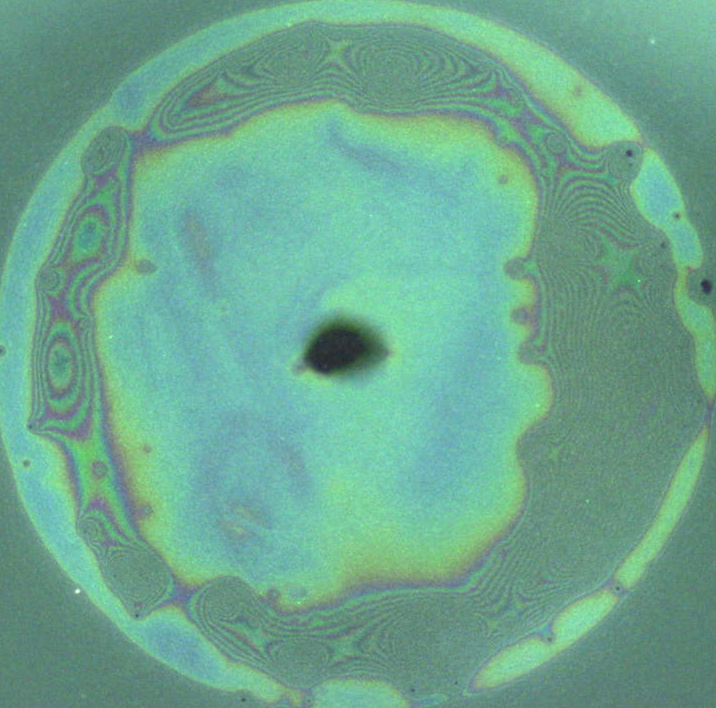Postdoctoral Researcher
Oslo, Norway
Academic Work Experience
Post-doctoral scholar, Fuller lab, Stanford University, CA, 2019
Visiting post-doctoral scholar, Fuller lab, Stanford University, CA, 2018
Researcher, Trilobite Microsystems, Norway, 2013
Technical consultant, EDRMedeso, Norway, 2011-2012
Education
PhD Microfluidic particle and cell separation, University of Oslo (UiO), Norway, 2017
MSc Mechanical Engineering, Norwegian University of Science and Technology (NTNU), Norway, 2011
Exchange Year, University of California, Santa Barbara (UCSB), USA, 2009
Research Interests
My fascination for fluid mechanics comes from everyday observations such as bubbles rising in a carbonated beverage and cloud formations, two examples spanning many length scales. I am particularly interested in hydrodynamics, multiphase flows and interfacial dynamics. The beauty of these flows can best be described in images and this approach has formed my interest in optical methods like shadowgraphy, interferometry and velocimetry. To understand the complex physical underpinnings of these phenomena, I couple my experimental observations with theory.
Research Focus
Evaporation induced gravitational instabilities in miscible fluids
The beauty and complexity of the Rayleigh-Taylor instability has attracted scientific investigation for over a century. Although much is known about the mechanisms triggering this phenomenon, evaporation induced Rayleigh-Taylor instabilities have enjoyed less attention and are of both fundamental and technological interest. In this work, the addition of polymers to tune the onset of convection is explored. We learn how adding polymers can either stabilize or de-stabilize the interface against ambient perturbations. A simple theoretical model can be utilized to control hydrodynamic instabilities in applications such as the production of film coatings.
Collaborators: Vinny Chandran Suja, Sam Fox Wheeler, Meiirbek Islamov and Gerald G. Fuller

Figure 1: Photo showing evolving plumes of the gravitational Rayleigh-Taylor instability between miscible liquids.
In-vitro examination of tear film drainage and dewetting on contact lenses
In this project, we are working with a contact lens manufacturer to characterize the stability of thin liquid films across hydrogel materials that mimic the human tear film. By interferometry measurements we have established a correspondence between dewetting behaviour and contact line hysteresis, see Fig. 2. Our setup offers the advantage of independently varying the experimental parameters to best mimic the human tear film.

Figure 2: Image showing drainage profile on a hydrogel contact lens. The contours can be translated to film thickness to obtain the spatiotemporal evolution of the film drainage and dewetting.
The Hydrodynamic Breadboard: Clog-Free Cell Sorting Using Hydrodynamic Obstacles
Despite the numerous applications of cell separation, clogging remains a problem because cells adhere to surfaces. Clogging is therefore particularly pronounced in filters and in obstacle-based methods, such as in Deterministic Lateral Displacement (DLD), where the surface areas are extremely large. To avoid clogging, we replace the physical obstacles used in DLD with combinations of sources and sinks (inflows and outflows) to create “hydrodynamic” obstacles. Since these new obstacles have no physical boundary, only a flow boundary, the cells have no surface to adhere to. Hence, clogging can be avoided.
Previous research experience
I completed my master’s degree in Mechanical Engineering at NTNU, with a thesis in the Lattice Boltzmann Method. After graduation, I was a technical consultant doing fluid flow simulations. I finished my PhD in experimental microfluid dynamics at the University of Oslo (UiO) in Norway, with specialized training in optical characterization methods.
During my PhD, I demonstrated how tunable flow fields can be used to sort particles and complex algal cells at high throughput in a microfluidic filter. By utilizing hydrodynamic interactions between particles, filter structures and the tunable flow fields, I showed how separation can be performed without clogging. I employed fluorescence imaging to characterize these hydrodynamic interactions and velocimetry techniques (Particle Image Velocimetry (µPIV) and Particle Tracking Velocimetry (PTV)) to quantify the flow and particle velocities. Figure 2 is a streakline visualization which shows trajectories of separation particles (thick streaks) near the filter structures. The thin streaks represent the fluid flow.

Figure 3. Streakline visualization that shows clog-free, hydrodynamic separation of particles in a microfluidic filter. The thick streaks represent the particles and the thin streaks represent the fluid flow.
